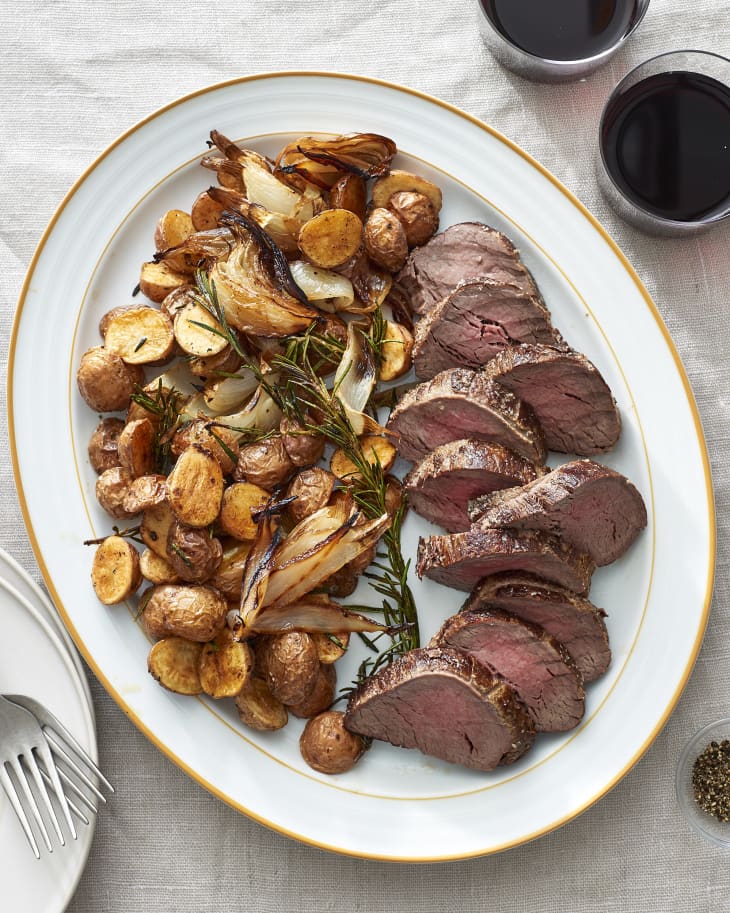How Safe Are Cheap Medallions of Beef Beef
5 Common Mistakes to Avoid When Making Beef Tenderloin
We independently select these products—if you buy from one of our links, we may earn a commission. All prices were accurate at the time of publishing.

Whether it's served at a romantic dinner for two or it's roasted whole as the centerpiece of a holiday dinner, beef tenderloin is the classic choice for a special and sometimes over-the-top main dish.
It's also one of the most expensive beef cuts around, so there's a lot of pressure to not mess it up. Whether you're cooking tenderloin steaks for your sweetheart or roasting the whole cut for a crowd, here are five mistakes to avoid, plus some tips, so your efforts and money are well-spent!
1. Not trimming it properly.
Beef tenderloin has silver skin, which is a thick layer of white (sometimes silvery) connective tissue running along its surface. This tough tissue never tenderizes, is tough to cut through, and just doesn't taste very good if left on the meat.
Follow this tip: Use a thin, flexible knife to cut and remove all the silver skin off of the tenderloin. If it doesn't look like the meaty part that you would want to eat, trim it off, or ask your butcher to take care of it.
2. Not tying it up.
If you cook a tenderloin as is, whether you're cooking an oddly shaped whole beef tenderloin or tenderloin steaks, the inconsistent shape of the meat can result in uneven cooking — thinner pieces will overcook or thicker pieces will be too rare.
Follow this tip: A whole beef tenderloin has a thinner, tapered end. Tuck this end under itself and then tie the whole thing up so that it is the same thickness all the way around. For steaks, stand each one up on a cut end and tie kitchen string around it so it's in a round shape.
3. Not seasoning it enough.
Beef tenderloin is known for being extremely tender, but it doesn't have a lot of inherent beefy flavor on its own. Not seasoning or lightly seasoning the meat means that it'll be bland and uninteresting.
Follow this tip: Evenly cover the surface of the meat with a thin layer of kosher or sea salt, and don't be afraid to also use dried herbs or crushed garlic for some extra flavors. The salt will bring out the beefiness in the tenderloin.
4. Overcooking it.
Tenderloin is lean and one of the most tender cuts around, but the lack of fat means that overcooking it will result in dry, tough meat.
Follow this tip: Tenderloin is best served rare or medium-rare, so use a thermometer to make sure it doesn't get cooked past 140°F in the center. If you have guests who like their meat well-done, consider cutting a whole tenderloin into pieces and cooking them to different temperatures to please everybody.
5. Not letting it rest.
If you cut into tenderloin right after it's been cooked, all the delicious juices will leak out onto your plate and cutting board and not end up in the meat or your mouth. What's left will be dry and have less flavor.
Follow this tip: When your tenderloin is done cooking, set it aside in a warm place to rest (a few minutes for steaks; around 10 to 15 minutes for whole tenderloins). This lets the meat relax and gives it a chance to redistribute and reabsorb all the juices.
Source: https://www.thekitchn.com/5-common-mistakes-to-avoid-when-cooking-beef-tenderloin-tips-from-the-kitchn-214074
0 Response to "How Safe Are Cheap Medallions of Beef Beef"
Post a Comment